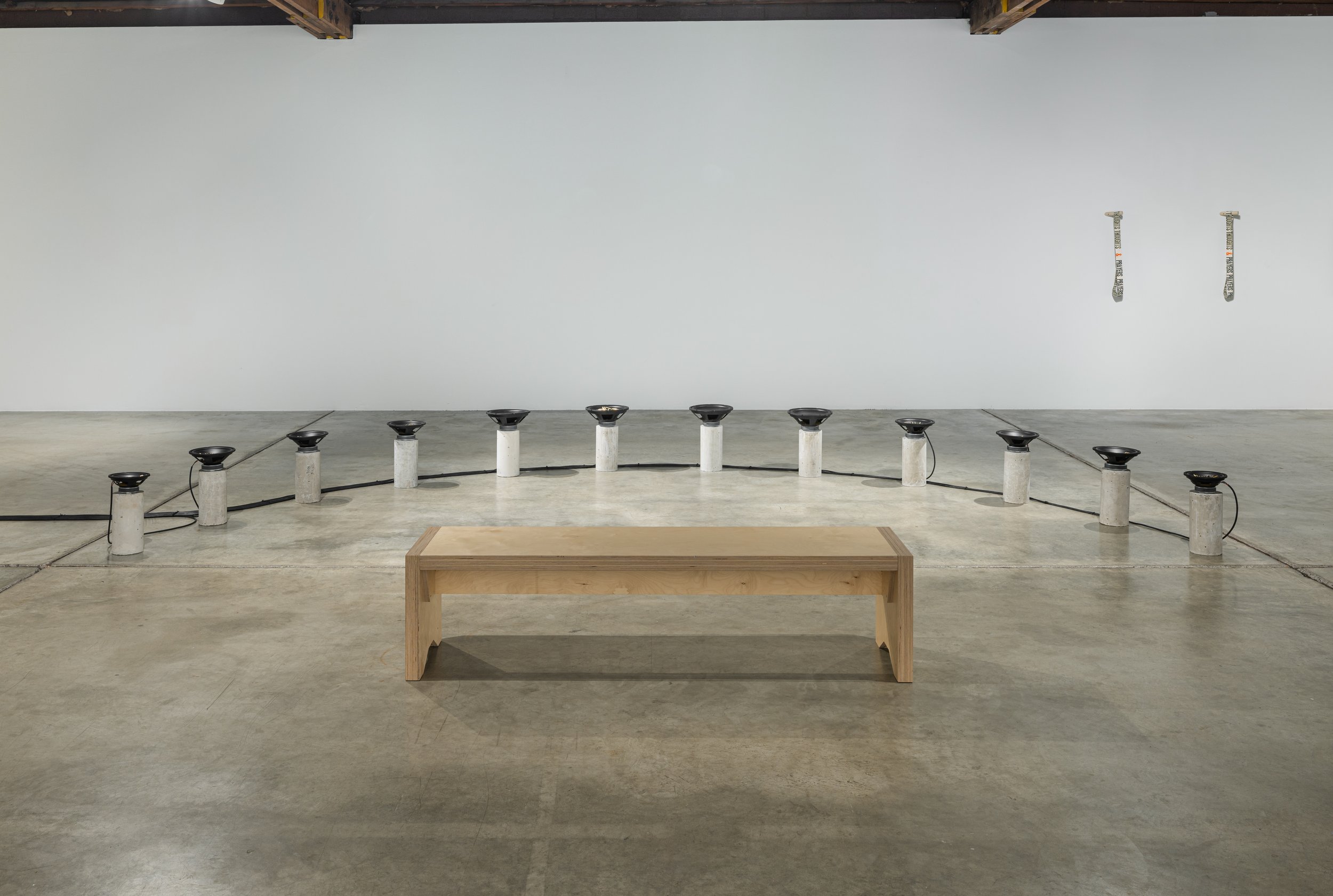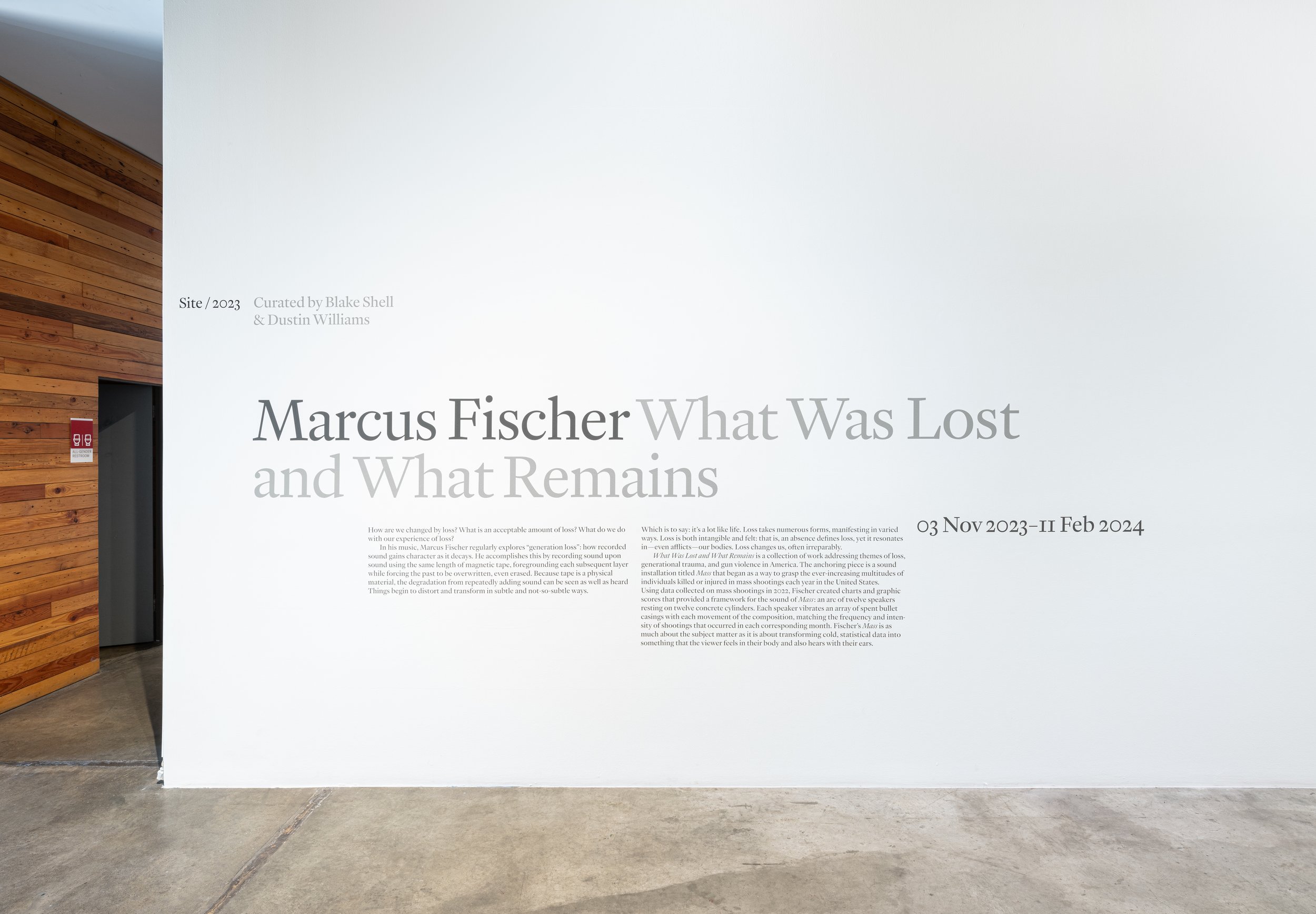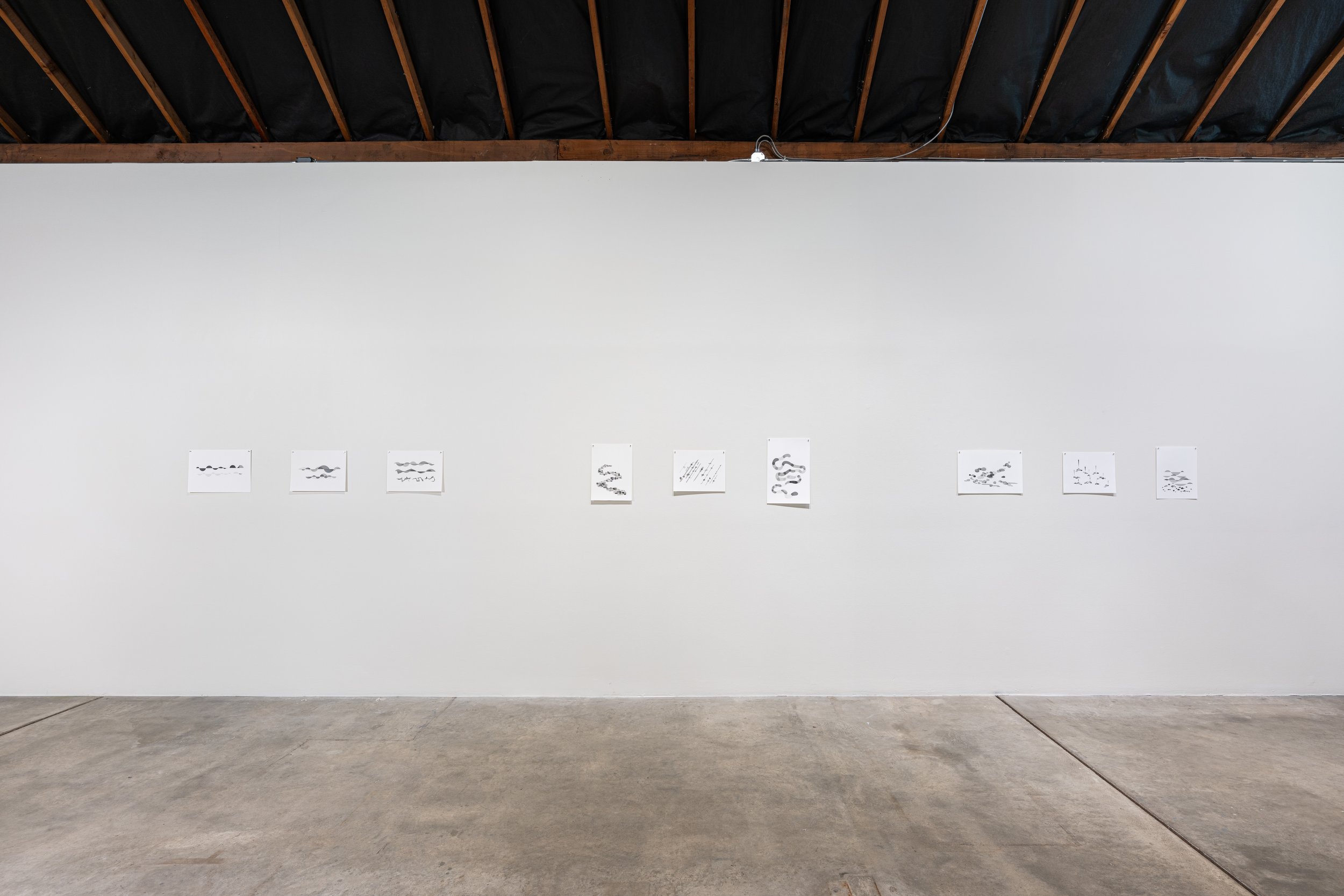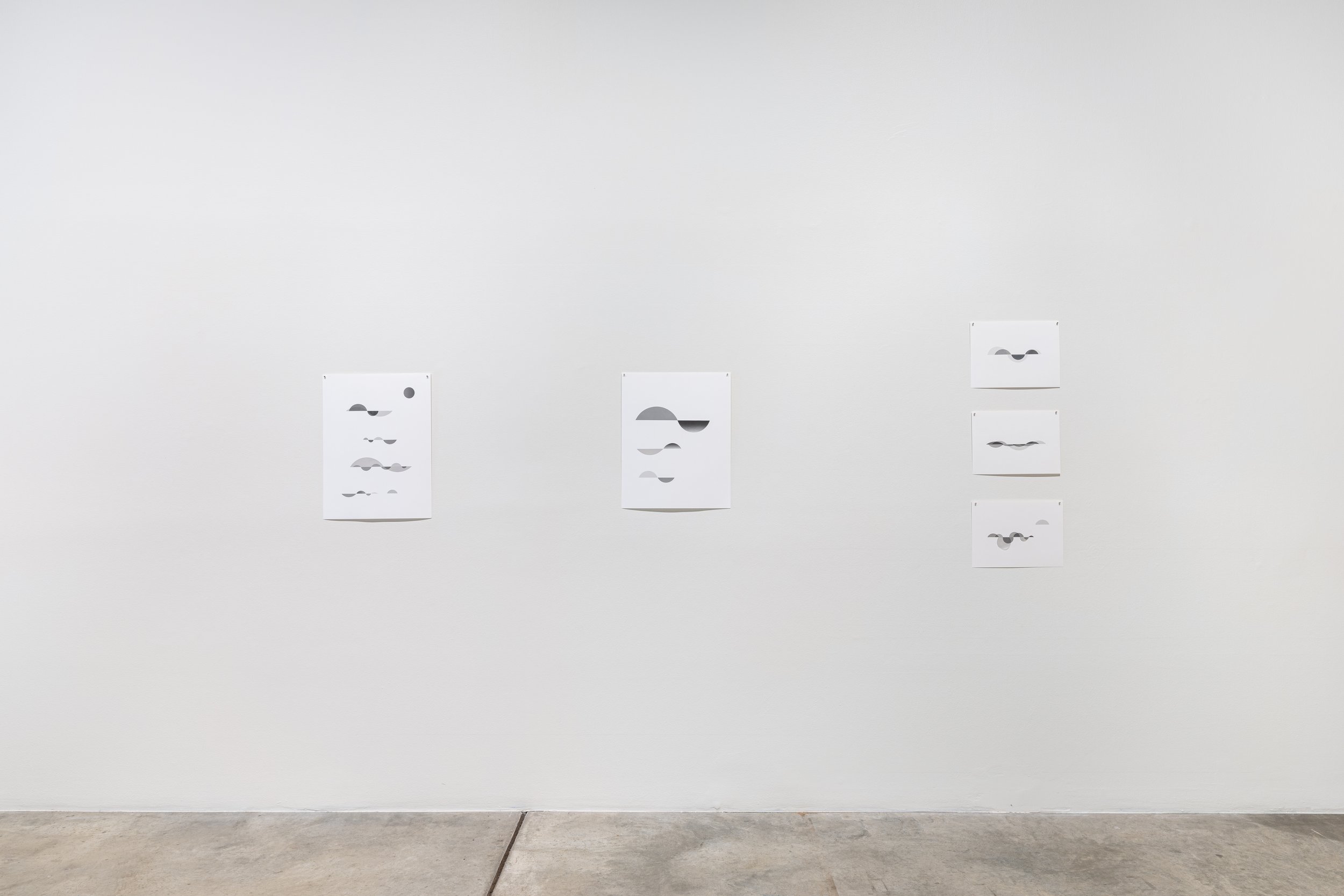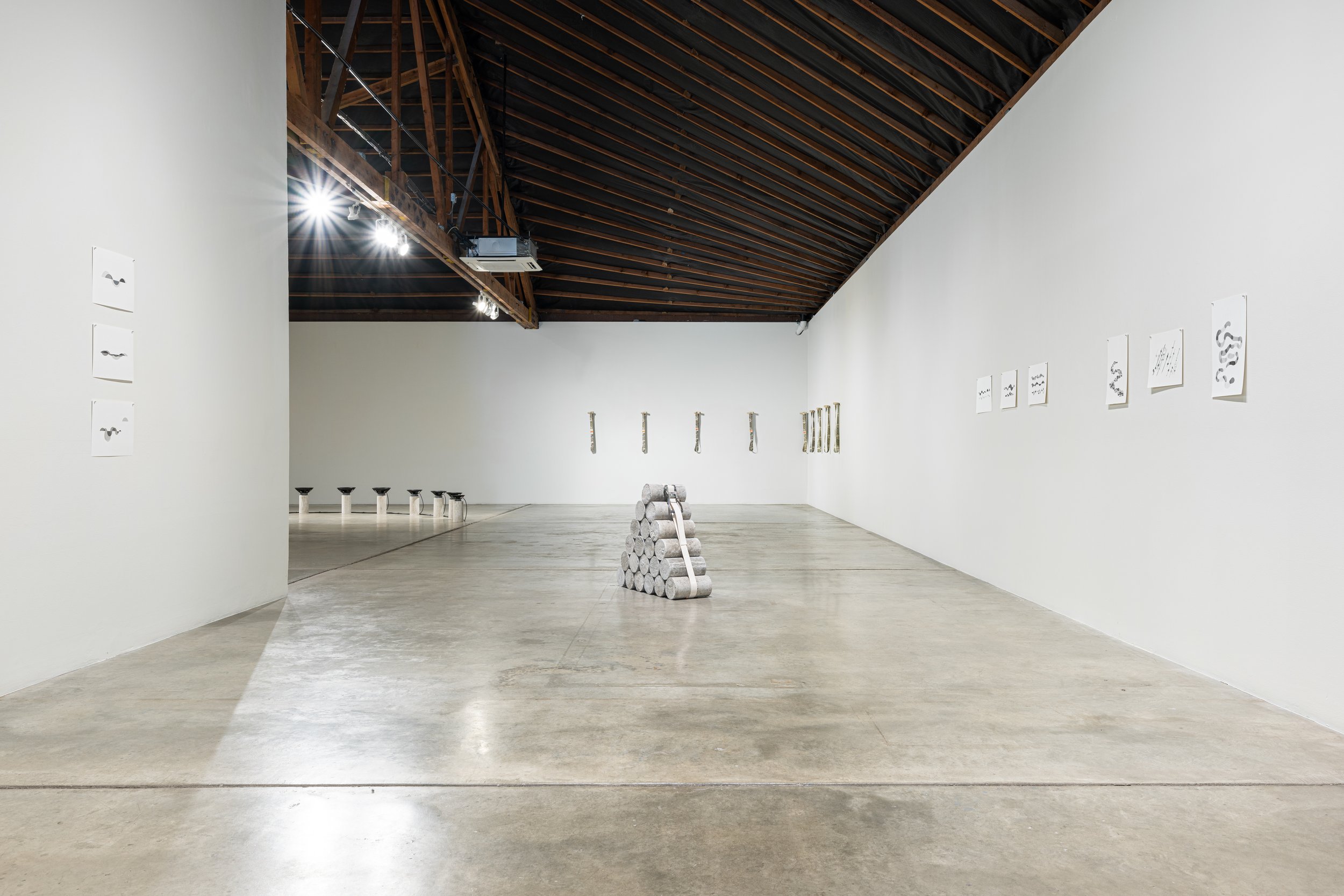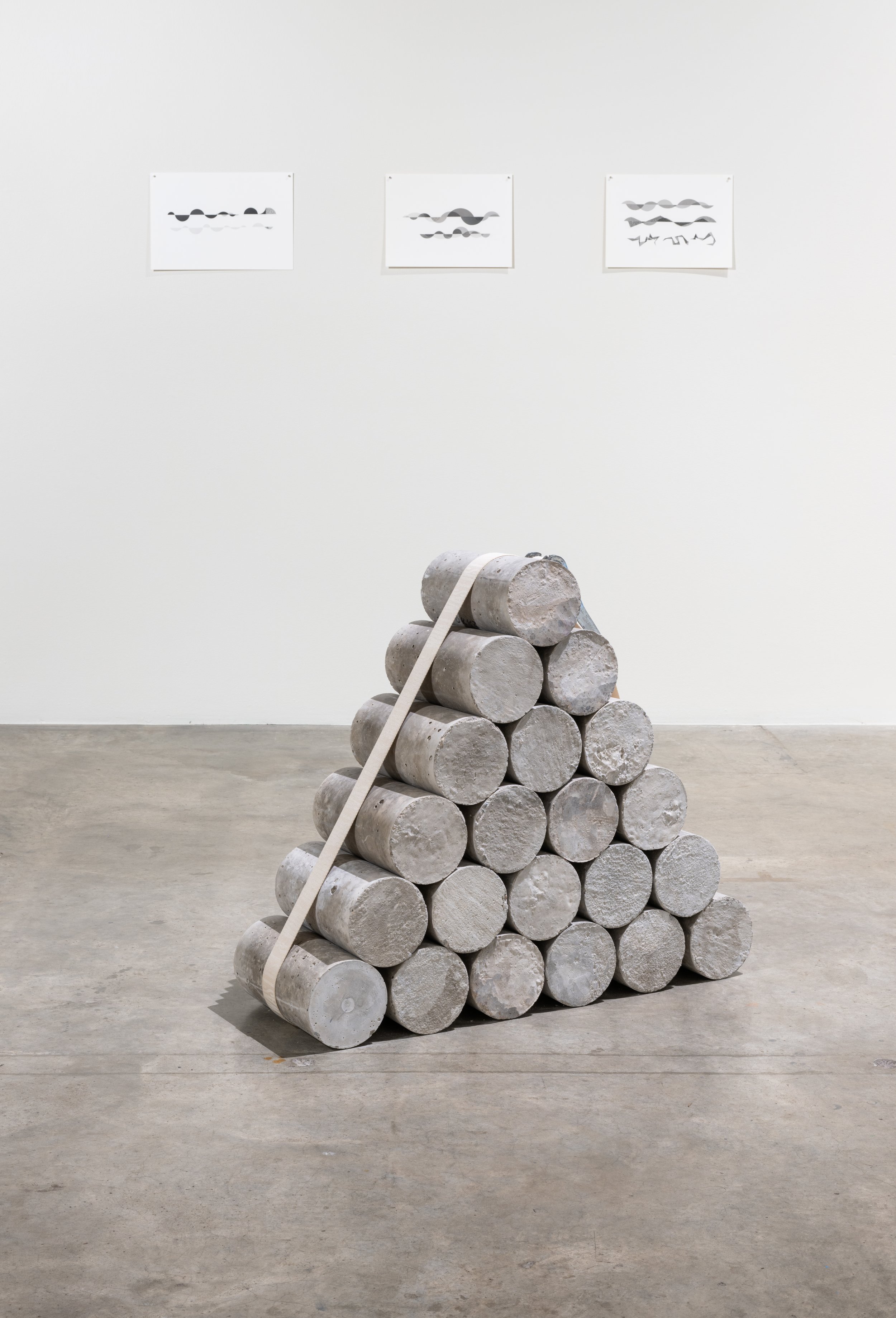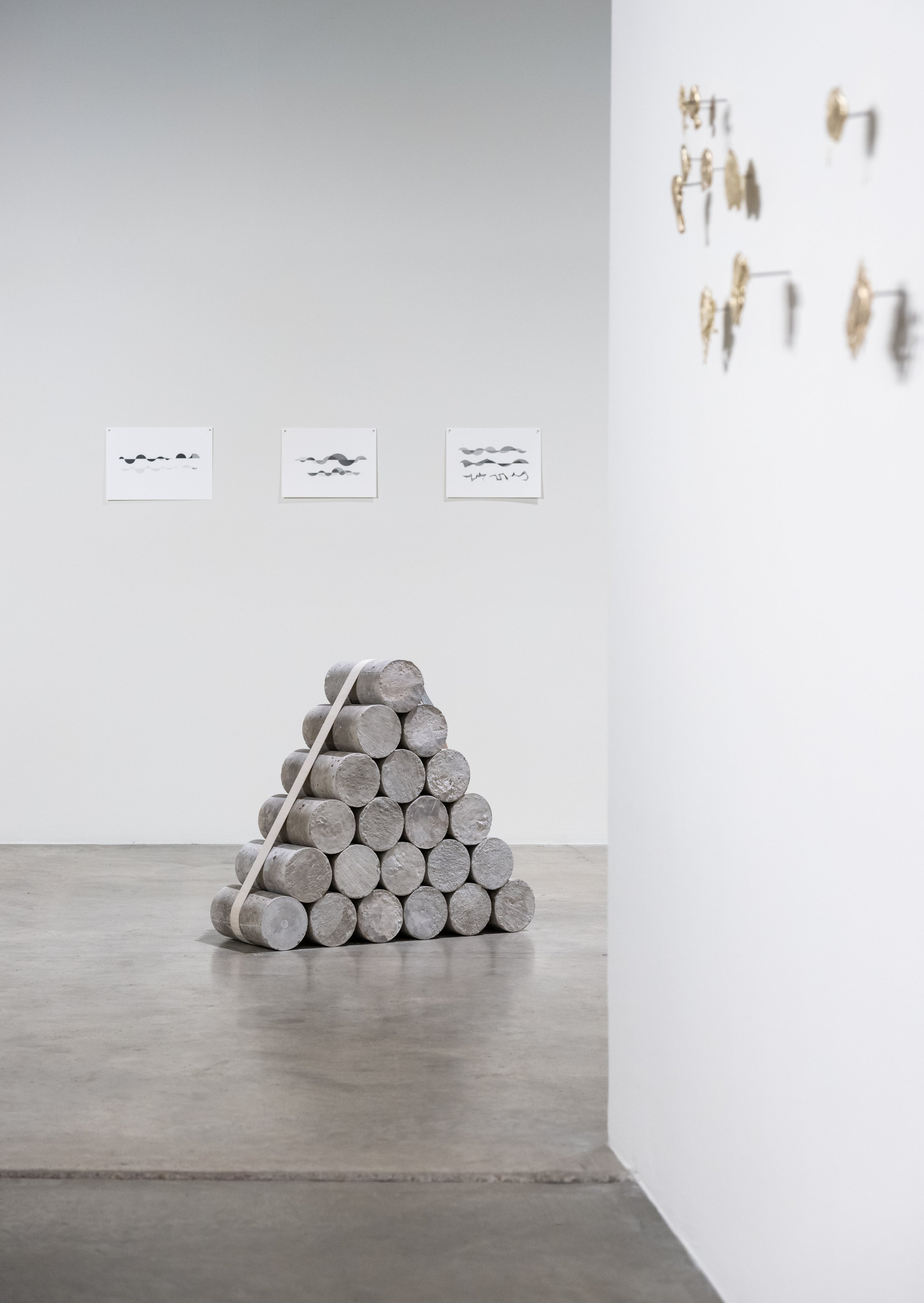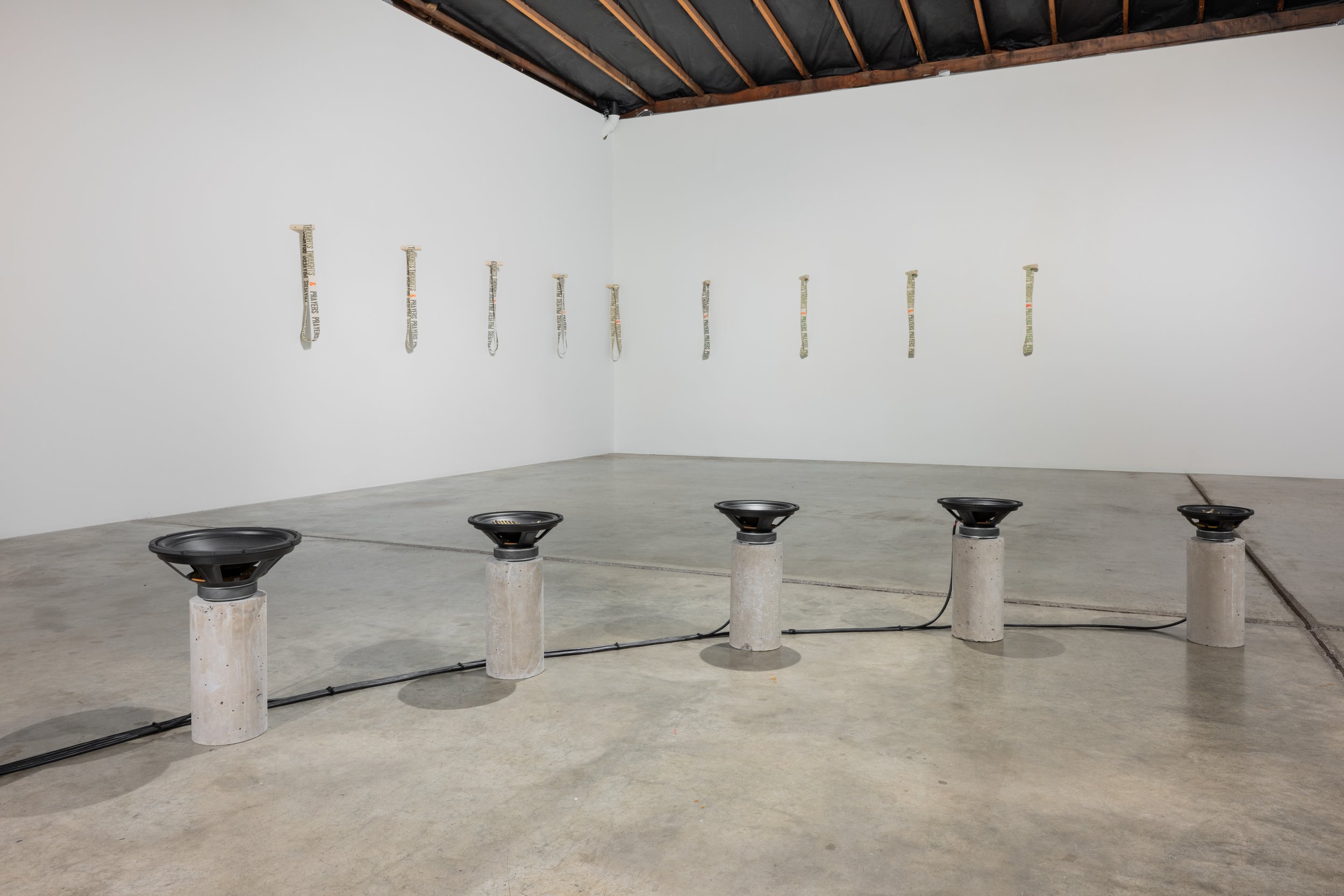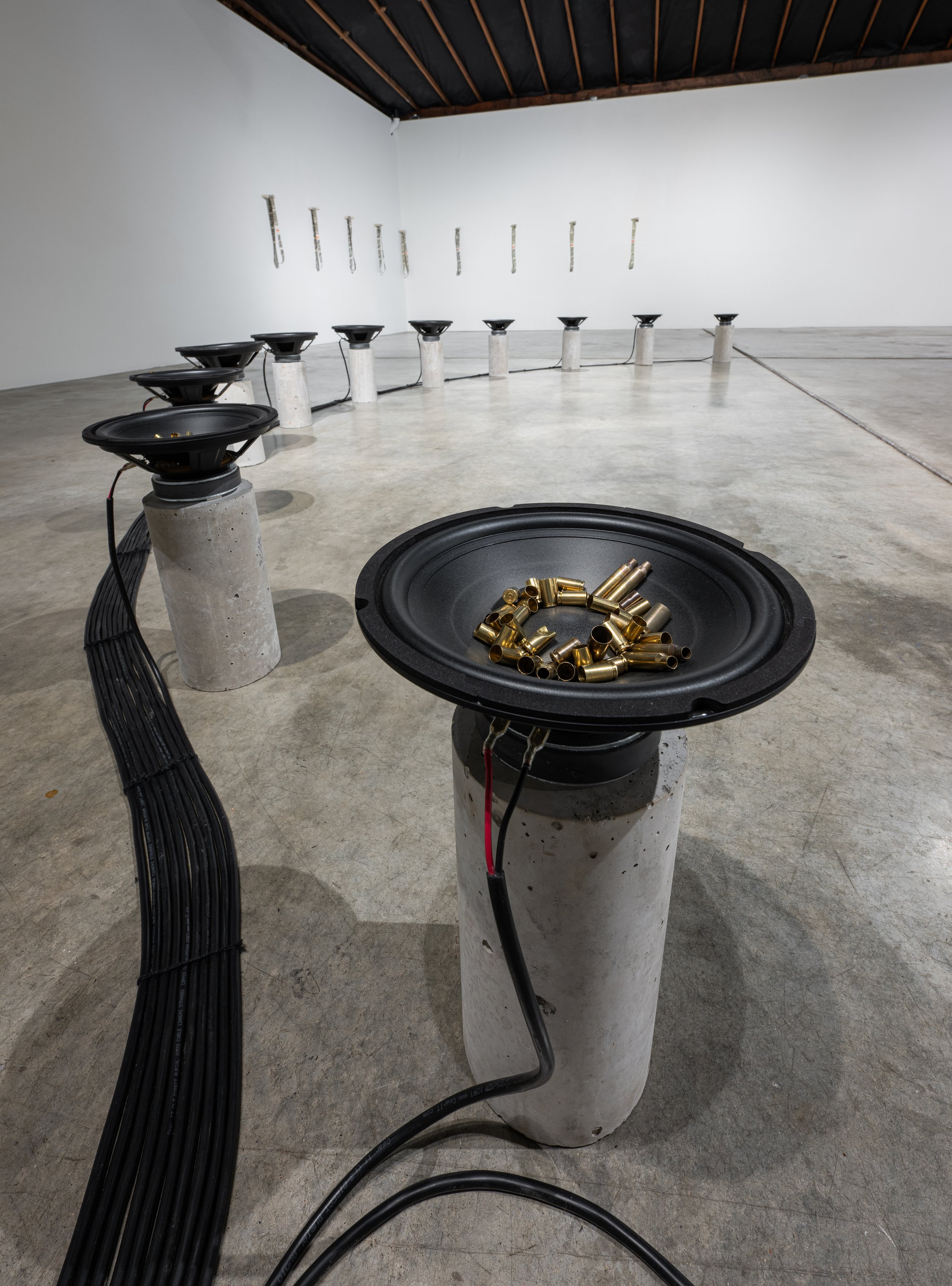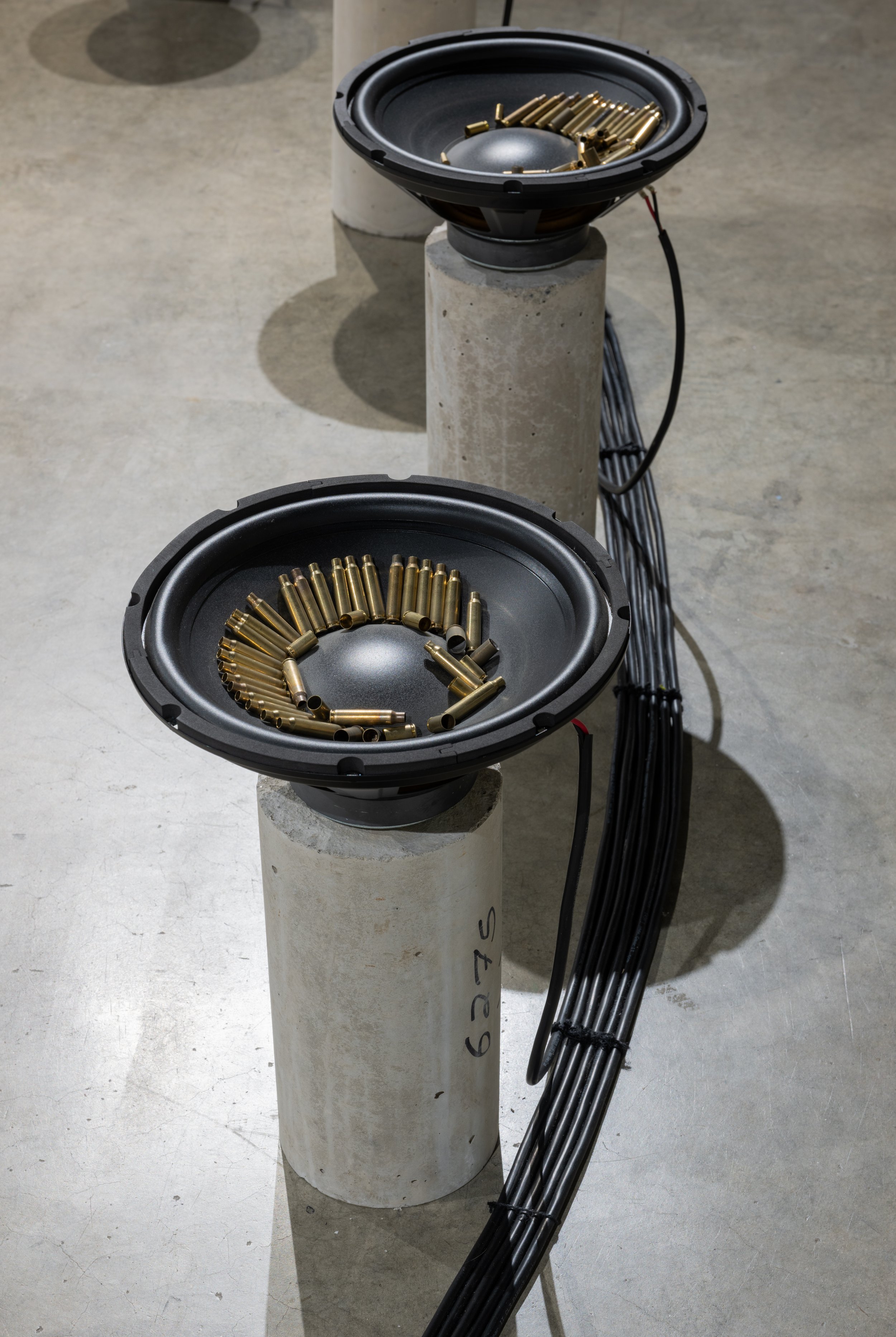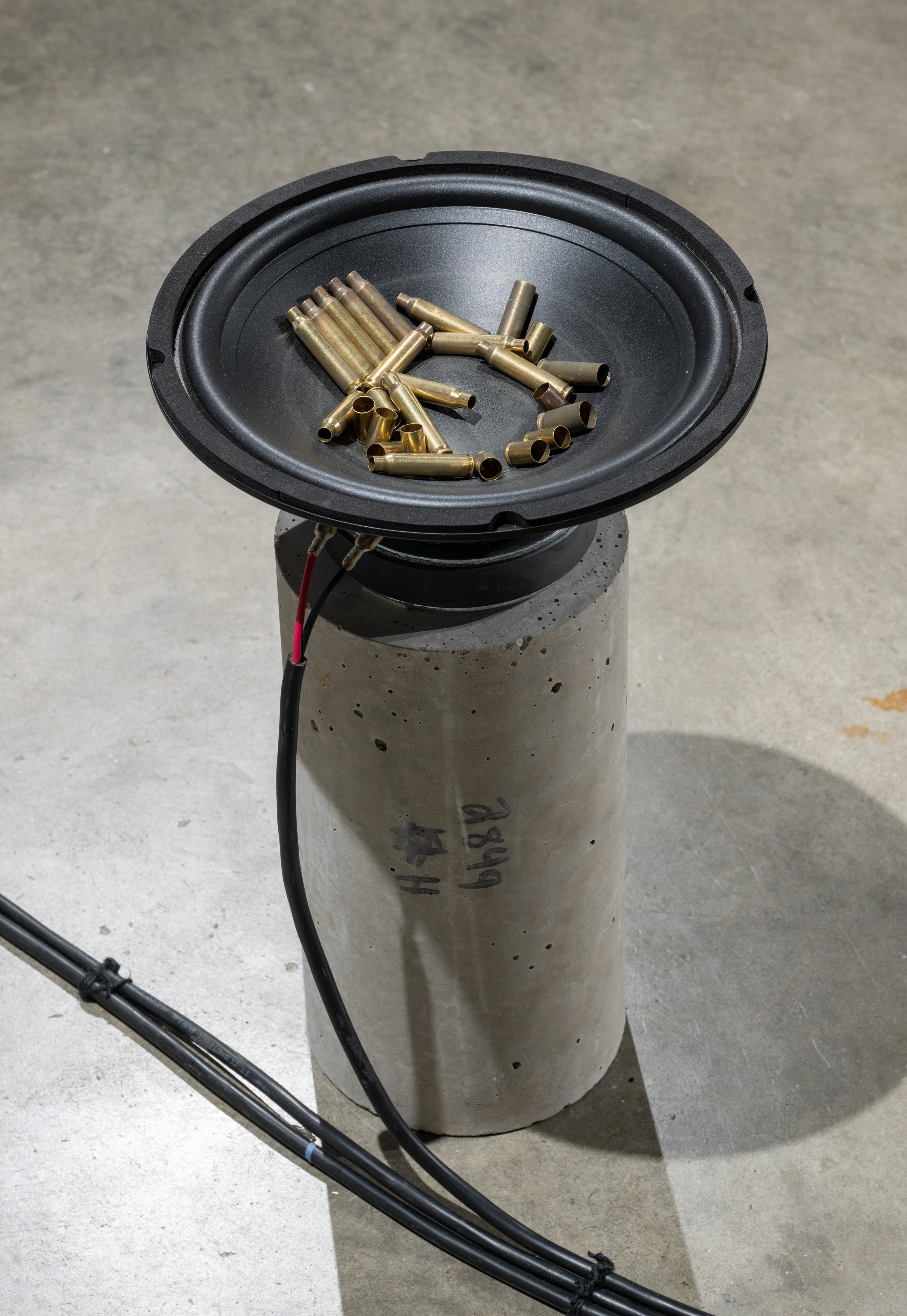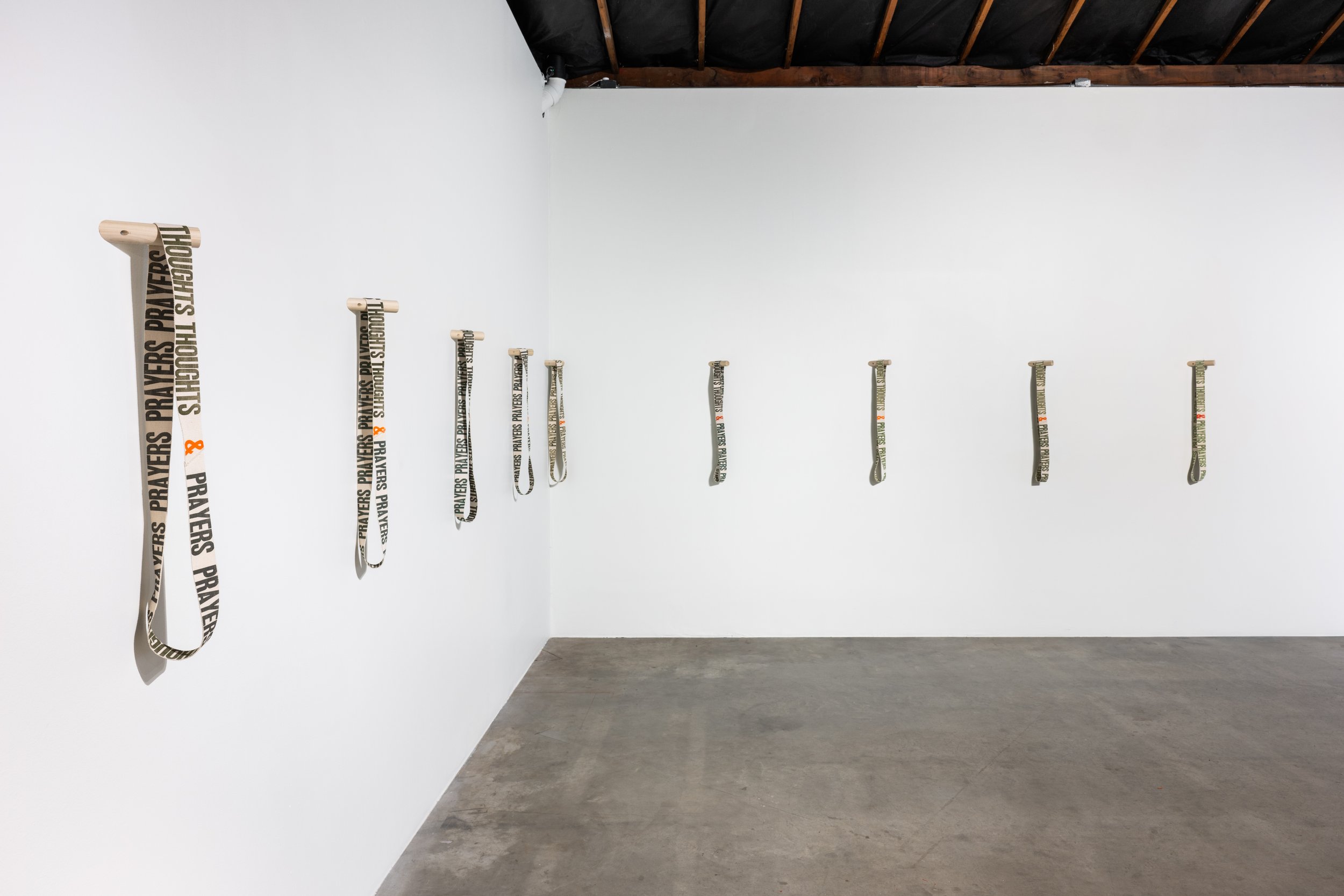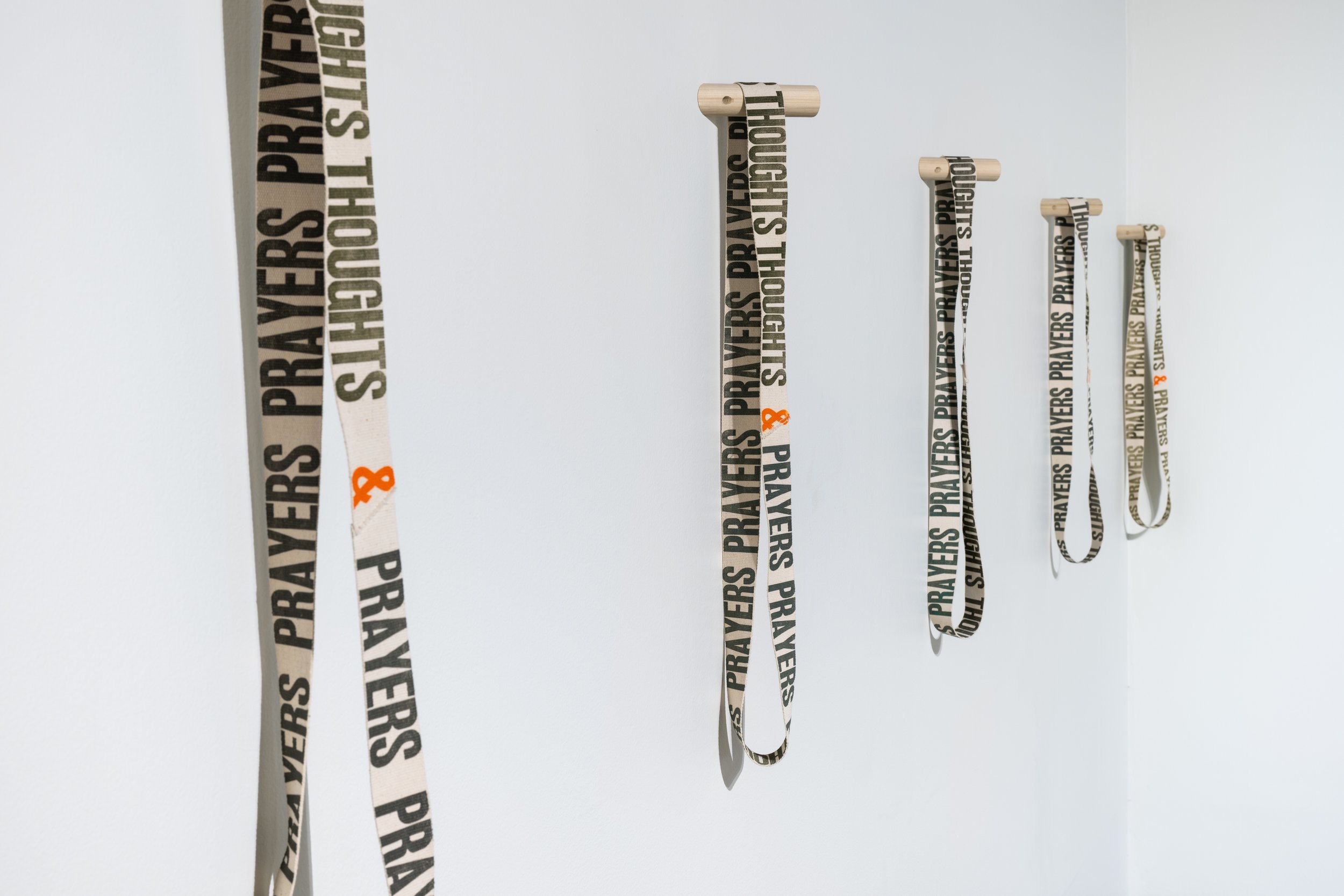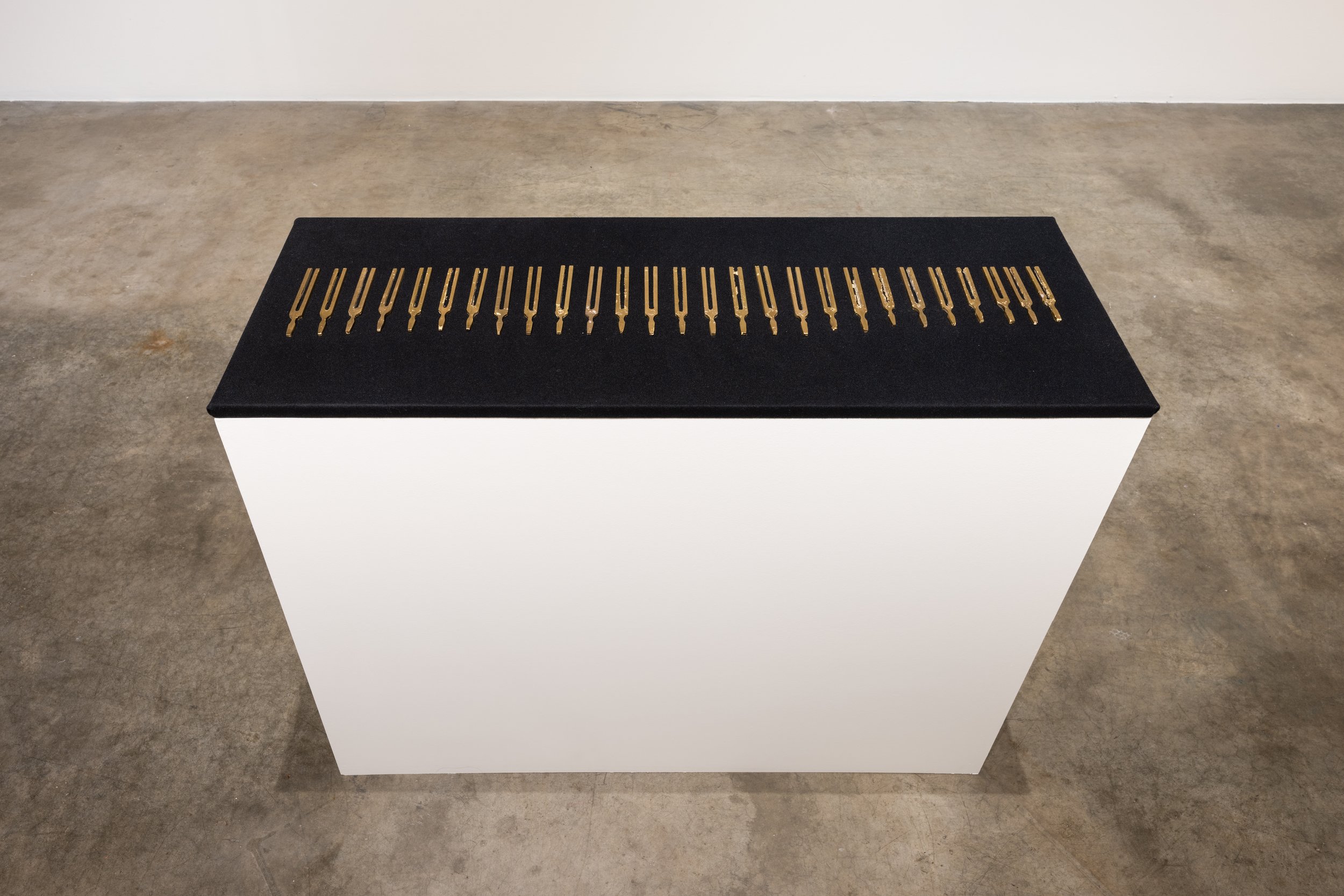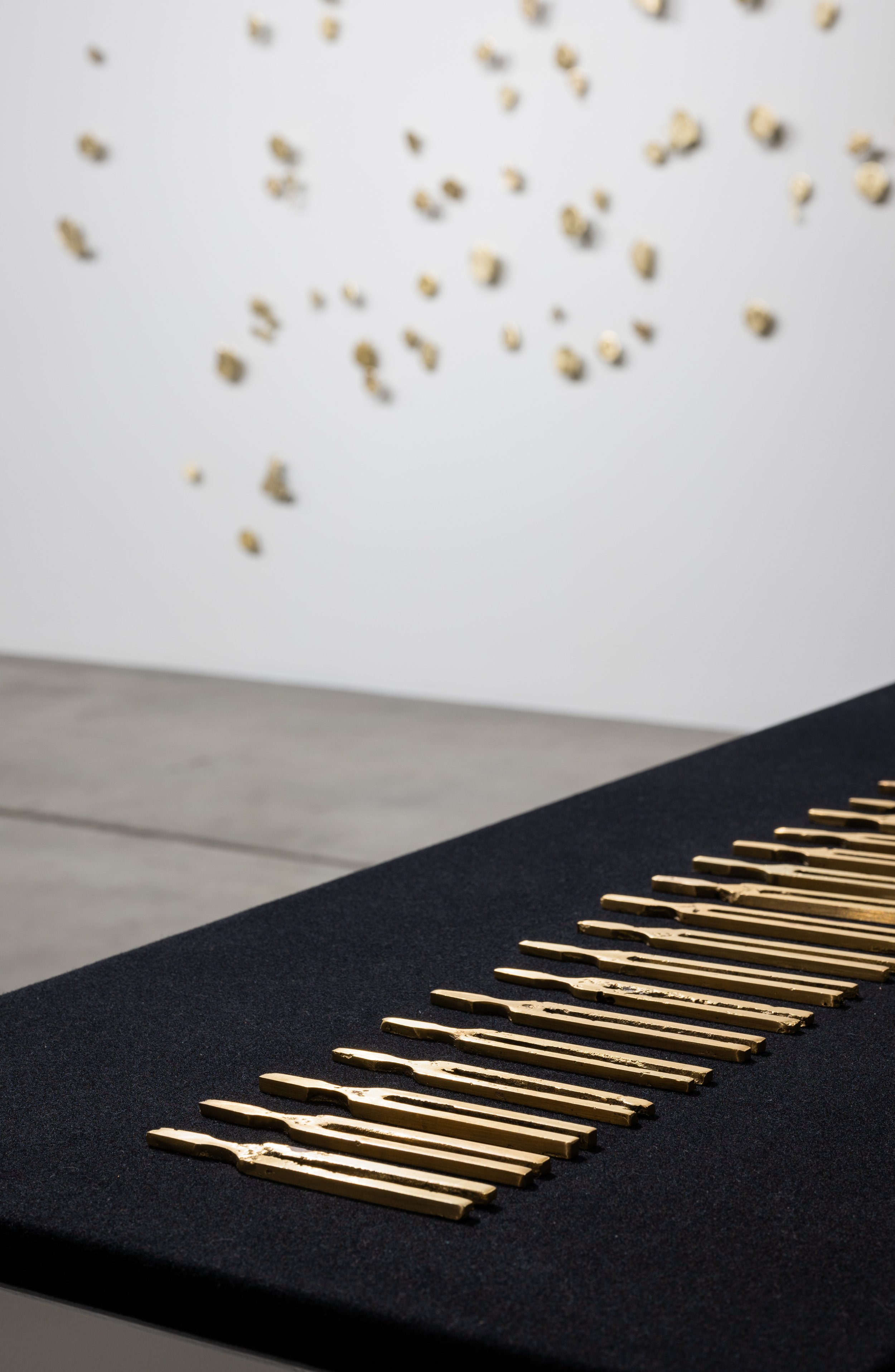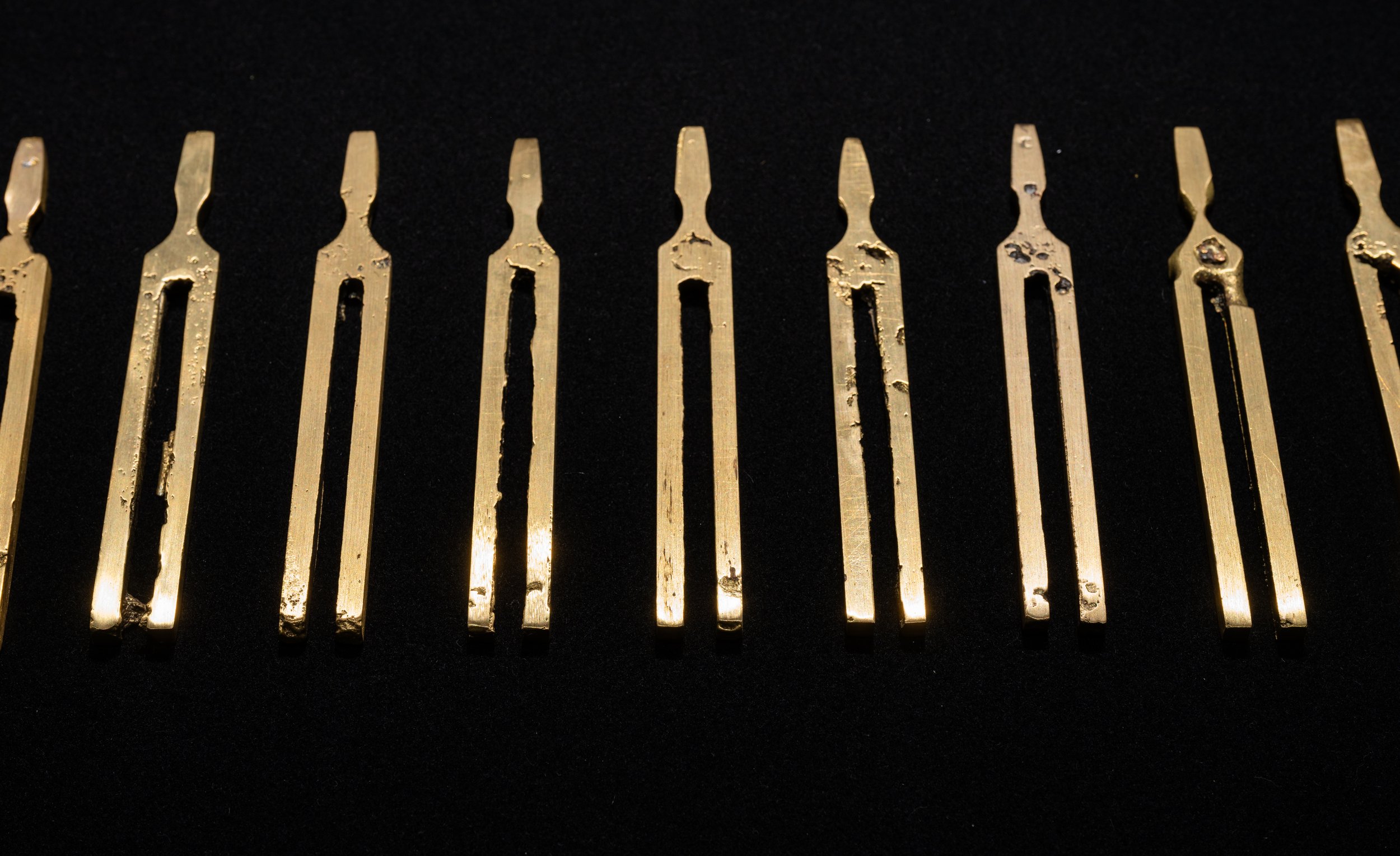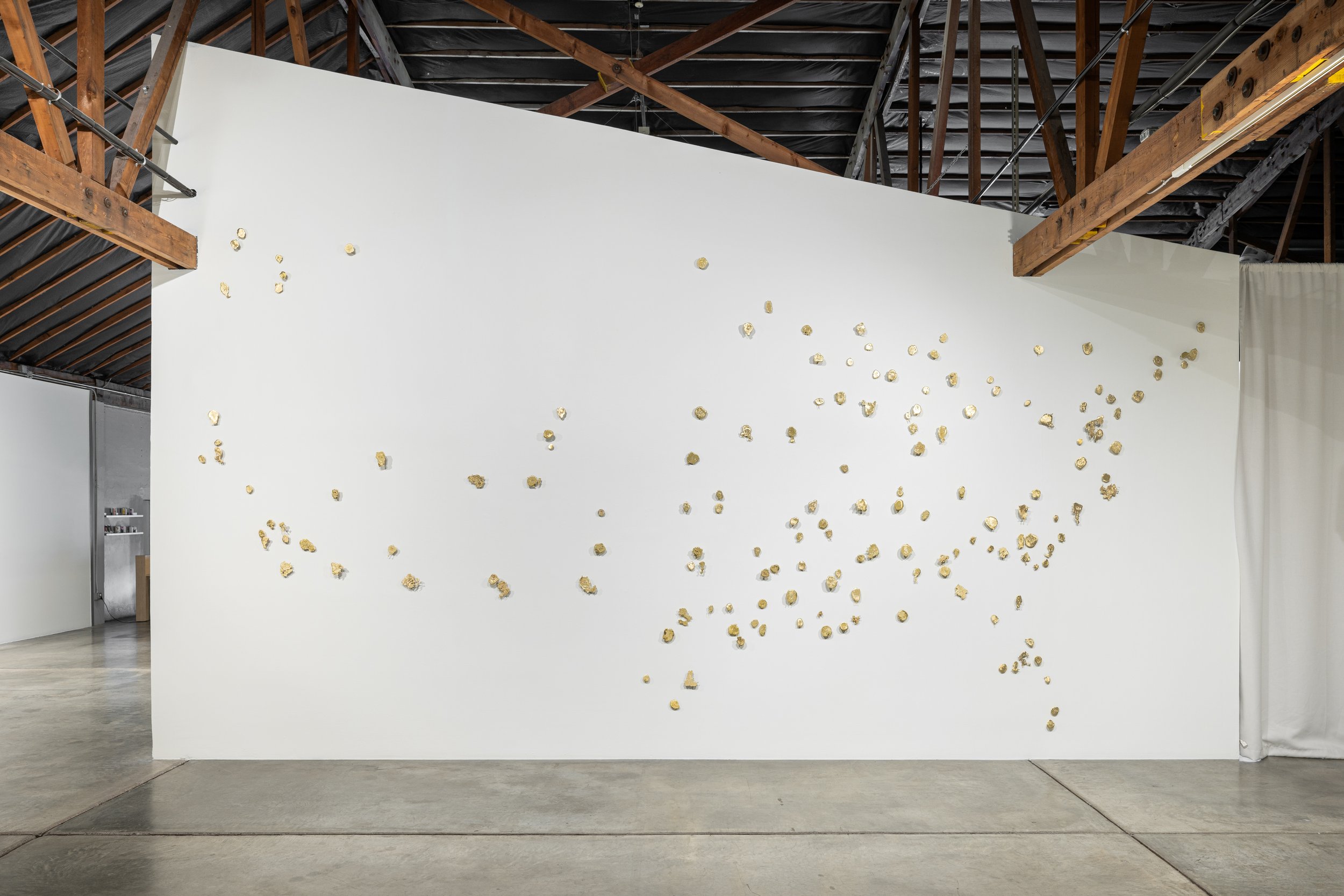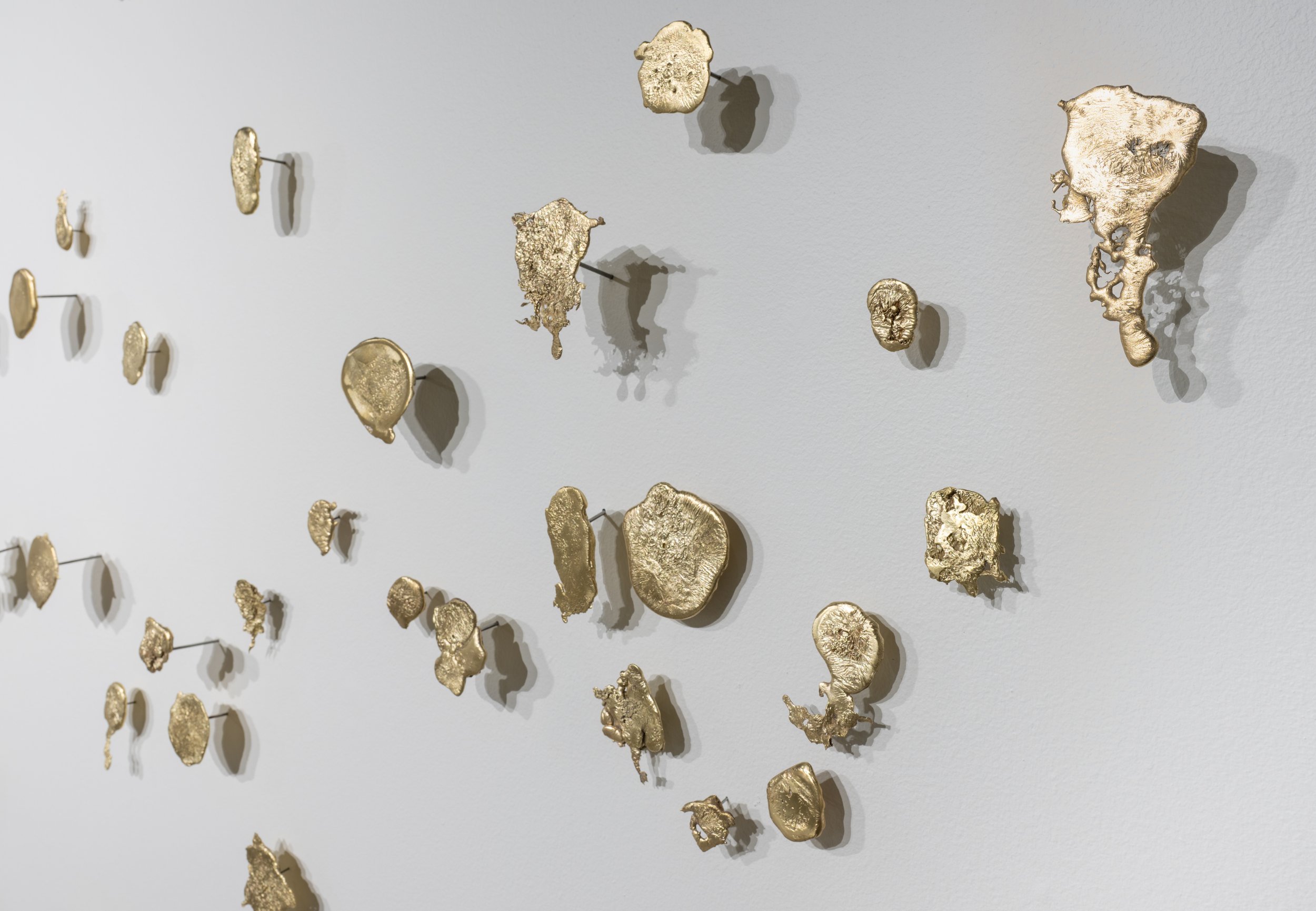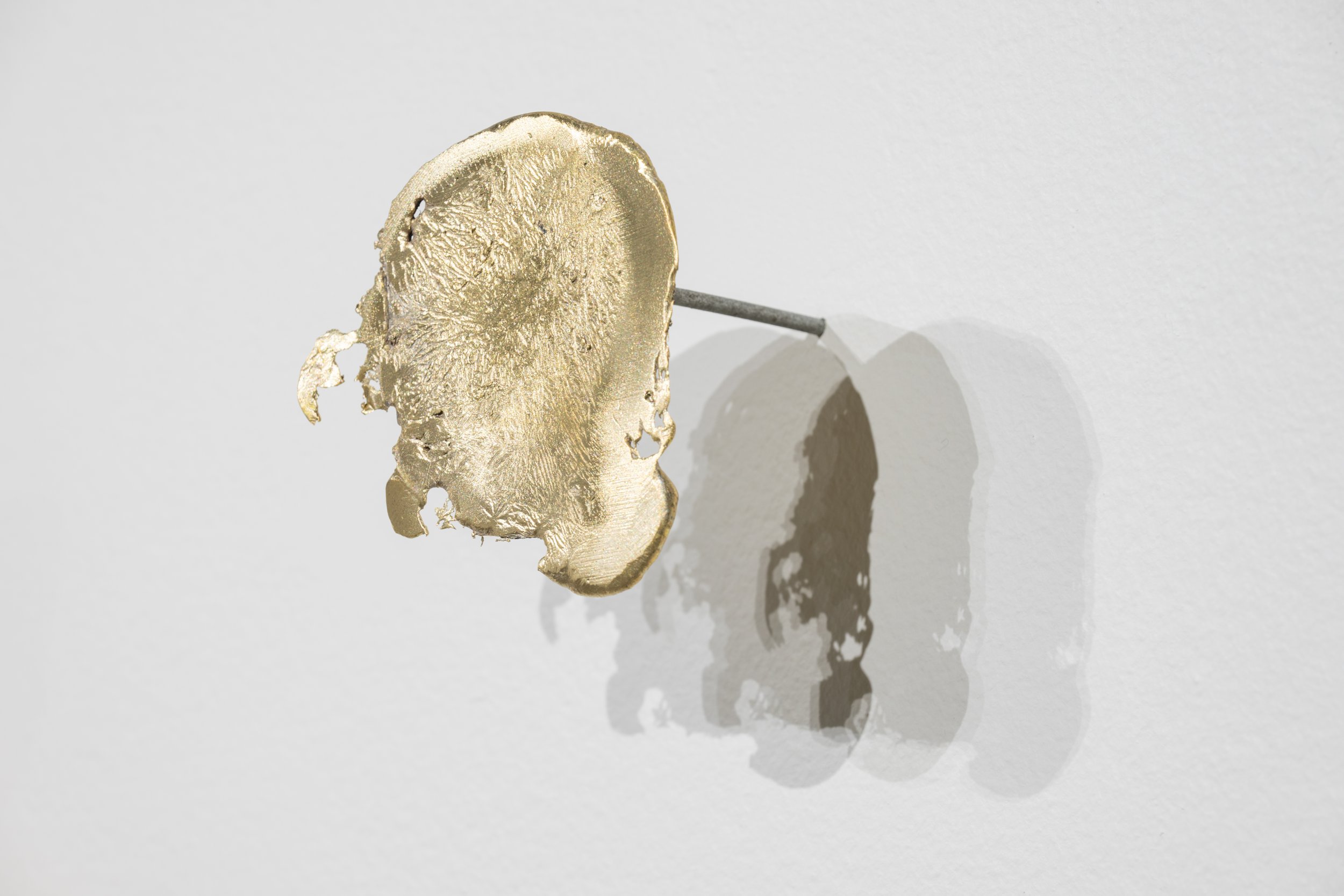What Was Lost and What Remains
Marcus Fischer
3 November 2023 – 11 February 2024
First Saturday Open House events
November 4, 5-8pm. Quadraphonic performance by Marcus Fischer
December 2, 5-8pm. Quadraphonic performances by Christi Denton and Meroitic (Jamondria Harris)
January 6, 5-8pm. Collaborative performance by David Chandler and Paul Dickow
February 3, 5-8pm. Artist talk with Stephanie Snyder at 6pm. Performance by John Niekrasz at 7pm.
Curated by Blake Shell and Dustin Williams
Oregon Contemporary presents What Was Lost and What Remains, a solo exhibition by Marcus Fischer. The exhibition is part of Site, a series of site-specific large-scale solo exhibitions by artists of the Pacific Northwest. Originally a replacement series of exhibitions for the biennial during the pandemic, Site was created to utilize Oregon Contemporary’s strength as a large-scale venue and give artists an opportunity for a solo exhibition and the ability to make new work as they expand and grow their creative practices. The success of the program which included Natalie Ball (in collaboration with Annelia Hillman pue‑leek‑la’), Rick Silva, and Willie Little, has led to us establishing Site as our third core ongoing program in addition to the Biennial and Curator in Residence programs.
Content Warning: Mass shootings, spent bullet shells
How are we changed by loss? What is an acceptable amount of loss? What do we do with our experience of loss?
These are questions Marcus Fischer has asked himself for years.
In his music, Fischer regularly explores “generation loss”: the way that recorded sound gains character as it decays. He accomplishes this by recording sound upon sound using the same length of magnetic tape, foregrounding each subsequent layer while forcing the past to be overwritten, even erased. Because tape is a physical material, the degradation from repeatedly adding sound can be seen as well as heard. Things begin to distort and transform in subtle and not-so-subtle ways.
Which is to say, it’s a lot like life. Loss takes numerous forms, manifesting in varied ways. Loss is both intangible and felt — that is, loss is defined by an absence, yet it resonates in, even afflicts, our bodies. Loss changes us, often irreparably.
Moving from the sonic artifacts of loss into the physical, Fischer has explored ways to illustrate these ideas through objects, all without leaving sound behind. The exploration has led to engagements with unfamiliar materials and methods: melting and casting brass, letterpress printing on fabric, and mapping data in spreadsheets to convert charts into graphic scores.
The anchoring piece in the exhibition What Was Lost and What Remains is a sound installation titled Mass that began as a way to grasp the ever-increasing multitudes of individuals killed in mass shootings each year in the United States. In late 2021, Fischer began to think more concertedly about gun violence in his home country, specifically the reality of mass shootings here versus elsewhere in the world.
Using information collected by the Gun Violence Archive, Fischer plotted the data points from the calendar year of 2022 onto charts. These charts, in turn, became graphic scores that provided a framework for the sound of Mass: an arc of 12 speakers resting on 12 concrete cylinders. Each speaker vibrates an array of spent bullet casings with each movement of the composition, matching the frequency and intensity of shootings that occurred in each corresponding month. (This process is commonly referred to as “sonification.”) Fischer’s Mass is as much about the subject matter as it is about transforming cold, statistical data into something that the viewer feels in their body and also hears with their ears. Mass was developed during Fischer’s time as the sound artist in residence at the Bemis Center for Contemporary Arts in Omaha, Nebraska.
What Was Lost and What Remains is a collection of work addressing themes of loss, generational trauma, and gun violence in America. It also serves as a container to make space for certain things — issues, experiences, feelings, histories — that often aren’t easy to talk about.
Marcus Fischer is an interdisciplinary artist and musician based in Portland, Oregon. He is a first-generation American artist that explores sound through creation, collection, and transformation into immersive, layered compositions for live performances and exhibitions. Site-specific assemblages of exposed speakers, tape loops, and handmade objects are characteristic of his installations, often paired with melodies of restraint and tension. Fischer has released numerous recordings—both solo and collaborative. He contributed two sound works and two performances to the 2019 Whitney Biennial as the singular artist from the Pacific Northwest region included in the edition. He has been awarded residencies at the Robert Rauschenberg Foundation’s Rauschenberg Residency, and at the Bemis Center for Contemporary Art.
Fischer has recorded and performed nationally and internationally as a solo artist and in collaborations with artists including Taylor Deupree, Aki Onda, Ryuichi Sakamoto, Laura Ortman, Stephen Vitiello, Calexico, Raven Chacon, and Simon Scott.
The Site program is supported by the Henry Lea Hillman, Jr. Foundation. Oregon Contemporary is supported by The Ford Family Foundation, The Andy Warhol Foundation for the Visual Arts, the James F. & Marion L. Miller Foundation, the National Endowment for the Arts, and the Regional Arts & Culture Council. Oregon Contemporary also receives support from the Oregon Arts Commission, a state agency funded by the State of Oregon and the National Endowment for the Arts. Other businesses and individuals provide additional support.

